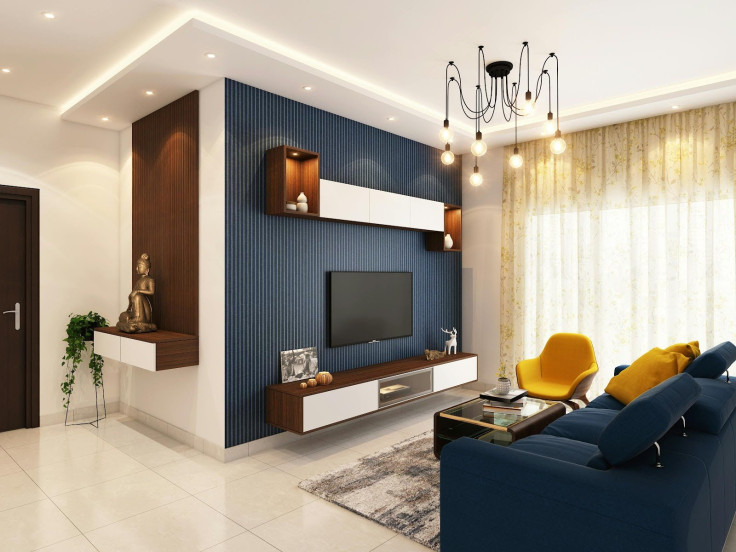The Business Side of Interior Design: Differentiating Your Services From The Competition
To thrive in today's design world, decorators must pair creativity with strong branding, personalisation, and next-level client service

Visual acuity is no longer sufficient in the constantly changing realm of home design. Designers today require business acumen, technological proficiency, and a distinct value proposition to excel. With the increasingly competitive market, successful decorators establish strong brands, deliver tailored interactions, and evolve to meet changing client needs.
Branding and Signature Aesthetics
For interior designers, a strong brand identity is one of the most effective methods of standing out. It is not necessarily about having a website or a logo, though those are important, but about the emotional reaction their design gets from people.
A few are recognised with minimalist styles, others with graphic maximalist designs, and others with vintage revivals or eco-sensibilities. By developing a consistent style between projects and online presences, designers create trust and recognition among possible consumers.
A signature style also promotes consistency in marketing materials, social media and portfolios. Designers who can define what they are about - whether purchasing from local artisans, curating historical inspirations, or prioritising health-forward design - form a voice that resonates with a specific audience. A strong branding voice expresses authority and establishes loyalty in an oversaturated industry.
Opportunities for Personalisation
One of the fastest-growing trends in interior design is customisation. Modern clients want spaces that reflect their personality, lifestyle and story. Designers who create opportunities for personalisation in their services can offer more compelling and meaningful experiences.
From personalised furniture to customised lighting designs, granting customers creative control makes them feel like project partners, not mere consumers. One particularly cutting-edge area is that of customised wall décor. Designers are increasingly collaborating with firms that enable you to upload your picture and convert it into an original mural or painting, instantly altering a room with a significant design. This function promotes emotional attachment to a room and allows designers to be more competitive in providing one-of-a-kind designs.
Customisation extends even further: hand-coordinated colour schemes, custom cabinetry, and even scent design are used to match a room's mood. These elements may appear minimal, yet cumulatively, they represent a design that customers cannot have with off-the-shelf products.
Client Experience
Stellar design is useless without first-class customer service. Client experience frequently determines whether one will refer a designer or come back in the future. Several of the best designers promote services that extend far beyond standard consultations.
Some companies invest in concierge-style services, handling everything from purchasing to delivery and set-up. Others offer digital mood boards, virtual walkthroughs, and curated design boxes sent to customers' homes. Communication is equally important. Clear deadlines, timely follow-through, and costs revealed upfront keep customers feeling safe and appreciated during the process.
Designers who treat every client like a VIP produce a beautiful outcome and peace of mind. Top-notch service is no longer nice in this era of online reviews and word-of-mouth referrals; today, it is essential for business.
Social Media and Digital Portfolios
Design is inescapably visual, and social media is now a crucial tool in marketing work, engaging with new audiences and establishing authority. Designers who regularly share behind-the-scenes peeks, before-and-afters, or time-lapse installations can engage potential clients and raise visibility. Aside from Instagram or Pinterest, online portfolios on purpose-built sites allow designers to showcase their best work for potential customers.
These websites act as living resumes, providing interactive experiences with the ability to search by style, colour, or room type. Designers who remain active on these sites establish brand recognition alongside quietly demonstrating versatility, aesthetic continuity and scope—social proof through reviews, likes, and shares further enhances credibility and desirability.
Sustainability, Sourcing and Ethical Design
As customers grow more conscious of environmental and social concerns, interior designers who value sustainability are increasingly appealing. Sourcing reclaimed wood, painting with low-VOC products and collaborating with socially conscious workshops aren't nice gestures; they are compelling business differentiators. Some designers take it further by providing carbon-neutral services, locally sourced materials, or upcycling initiatives. These initiatives appeal to customers interested in harmonising personal values with their environment, giving each design decision meaning.
Ethical design is not solely concerned with the environment but also with inclusiveness and access. Designers who are conscious of accommodating differently-abled users or providing culturally sensitive design aspects demonstrate care and sensitivity that is highly appealing in today's globalised market. Though sometimes overlooked, these additional considerations may be the distinguishing feature of a progressive business model.
Conclusion
In the highly competitive world of interior design, aesthetics are only part of the picture. To stand out, designers must combine creativity with robust branding, client-centred services, outstanding client care and sound ethical practices. Whether it's providing the possibility to create custom décor or prioritising sustainability as a value, the details matter. Designers who adopt these business principles design stunning spaces and establish lasting reputations and strong, resilient brands.
© Copyright IBTimes 2025. All rights reserved.





















